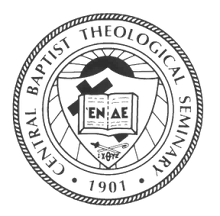The drama is heightening as the Gospel of John moves the
narrative of Jesus’ confrontation with temple authorities closer to its
climax. The story of the raising of
Lazarus sharpens the conflict and urges his opponents to put a stop to his
ministry.
John’s high
Christology is on full display as he bears witness to the power over death
entrusted to Jesus. The reader can sense
the very deliberate pace of Jesus’ actions in John 11—he hears of the illness
of his friend, delays two more days, and only travels to Bethany when he
presumes Lazarus has “fallen asleep.”
Ever conscious of bringing glory to God, Jesus crafts his encounter with
the grieving sisters and the dead brother to accent his distinctive claim with
this final sign. As Bultmann says, “The work of Jesus has its own hour.”
The
theological richness of this Gospel is on display in this long passage. One can sense that the writer is carefully
laying the groundwork for the climax of the Gospel—Jesus’ own resurrection—by
intentional contrast with this story of the resuscitation of the four-day dead
Lazarus. The varied exchanges of Jesus
with Mary and Martha, the religious leaders, and the disciples all serve to
clarify why they should believe that he was sent from God. Lazarus becomes a living example of the power
of God; yet, he is only raised, not resurrected. The Gospel will beckon yet further witness to
that.
Tonight at
Central we will host J. Denny Weaver, author of The Nonviolent Atonement and The
Nonviolent God. This distinguished Mennonite author offers a different
perspective on the why of Jesus’ death.
Rather than arguing with the weight of the Western tradition that God
provided Jesus as a sacrifice to expiate sin or as a substitute for sinful
humanity, Weaver places the cause of the death of Jesus squarely in the hands
of humans; God did not will it.
According
to Weaver, Jesus died because he lived in such a way—nonviolent confrontation
and witness to the Reign of God—that the powers of evil had him killed. It was not a death required by God in order
to placate wrath, make forgiveness possible, or substitute for sinful humanity.
God’s
saving work is seen in the resurrection, which is testimony to God’s power over
death. It seems that John’s Gospel, with
its accent on the relative power of death in the face of God’s power, grants to
Jesus the authority not only to call back Lazarus from the grave, but also to
burst the bounds of death utterly on Easter.
Molly T.
Marshall
Central prepares women and men for seeking God, shaping church, and serving humanity.
*Raising of Lazarus, from Art in the Christian Tradition, a project of the Vanderbilt Divinity Library, Nashville, TN. http://diglib.library.vanderbilt.edu/act-imagelink.pl?RC=46168 [retrieved March 31, 2014].
** JESUS MAFA. Jesus raises Lazarus to life, from Art in the Christian Tradition, a project of the Vanderbilt Divinity Library, Nashville, TN. http://diglib.library.vanderbilt.edu/act-imagelink.pl?RC=48269 [retrieved March 31, 2014].



No comments:
Post a Comment